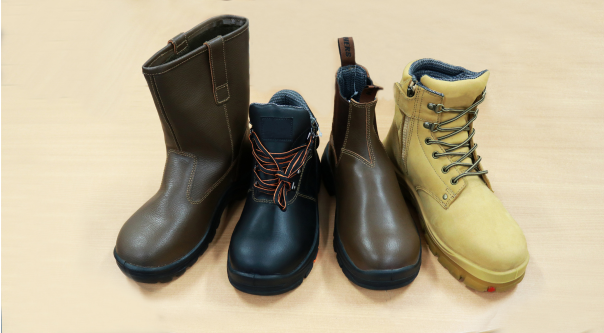
In recent years, there has been a growing recognition of the unique safety needs of women in various industries. One area where this distinction is particularly crucial is in the realm of safety footwear. Traditionally, work environments have predominantly catered to male requirements, including safety gear such as boots. However, the call for specifically designed safety boots for women has gained momentum, and for good reason.
Proper Fit and Comfort: One of the primary reasons for designing safety boots specifically for women is to ensure a proper fit. Women’s feet often have different shapes, sizes, and proportions compared to men’s. Ill-fitting footwear can lead to discomfort, blisters, and even long-term foot issues. Tailoring safety boots to the anatomy of women’s feet ensures a snug fit, enhancing comfort during long hours of work.
Reducing the Risk of Injuries: Safety boots play a crucial role in protecting workers from various workplace hazards, including heavy objects, electrical shocks, and slippery surfaces. Women, who may have smaller and narrower feet, require safety footwear that not only fits well but also provides adequate protection. Specifically designed boots take into account the unique risks women may encounter in their specific work environments.
Promoting Safety Compliance: Wearing appropriate safety gear is often a mandatory requirement in many workplaces to comply with health and safety regulations. However, if the available safety equipment, including boots, doesn’t cater to women, there’s a risk of non-compliance. Creating specifically designed safety boots encourages women to adhere to safety guidelines, fostering a safer work culture overall.
Enhancing Performance: Comfortable and well-fitted safety boots contribute to overall job performance. When workers, irrespective of gender, have footwear designed with their specific needs in mind, they can focus on their tasks without the distraction of uncomfortable or ill-fitting boots. This not only boosts productivity but also reduces the likelihood of accidents caused by compromised attention.
Breaking Stereotypes: The push for specifically designed safety boots for women is part of a broader movement challenging gender stereotypes in the workplace. Acknowledging that women play diverse roles in various industries reinforces inclusivity and equal treatment. It sends a powerful message that safety measures should be tailored to individual needs, regardless of gender.
Encouraging Diversity in the Workforce: Creating safety gear that is inclusive of both genders promotes diversity in the workforce. It encourages women to pursue careers in fields that may have been traditionally male-dominated, knowing that their safety needs are considered and addressed. This inclusivity contributes to a more balanced and dynamic work environment.
In conclusion, the demand for specifically designed safety boots for women is not just about aesthetics or fashion; it’s a matter of safety, comfort, and equal treatment in the workplace. By recognising and addressing the unique requirements of women in various industries, we move towards creating safer and more inclusive work environments for everyone.

